This article was medically reviewed by Daniel Wozniczka, MD, MPH and by wikiHow staff writer, Glenn Carreau. Dr. Wozniczka is an Internal Medicine Physician, who is focused on the intersection of medicine, economics, and policy. He has global healthcare experience in Sub Saharan Africa, Eastern Europe, and Southeast Asia. He serves currently as a Lieutenant Commander in the U.S. Public Health Service and a Medical Officer for the Epidemic Intelligence Service in the CDC. He completed his MD at Jagiellonian University in 2014, and also holds an MBA and Masters in Public Health from the University of Illinois at Chicago.
There are 11 references cited in this article, which can be found at the bottom of the page.
wikiHow marks an article as reader-approved once it receives enough positive feedback. This article received 16 testimonials and 88% of readers who voted found it helpful, earning it our reader-approved status.
This article has been viewed 977,712 times.
It’s frustrating to wait weeks for a bruise to heal, especially when it’s in a highly visible spot, so how can you speed up the process? Bruises form when the small blood vessels near your skin’s surface are broken. Blood leaks into the tissues under your skin and that familiar black-and-blue mark forms on your skin. However, a few simple home remedies can help your bruise fade quickly and easily. Keep reading for a list of effective treatments that’ll heal even the nastiest bruise!
Things You Should Know
- Apply ice immediately after you get a bruise and elevate the area. Compress the bruise with an elastic bandage to reduce swelling.
- Give the bruised area some rest for a few days and apply a heat pack 48 hours after getting the bruise to reduce its severity.
- Use natural, topical remedies like arnica ointment, vitamin K cream, or comfrey cream to make the bruise fade.
- Eat pineapple and food containing vitamin C, like oranges, to promote wound healing and help fade the bruise.
Steps
Ice the bruise several times a day.
-
Cold constricts the injured blood vessels. Wrap an ice pack, a bag of ice, or a package of frozen vegetables (like frozen peas, for example) in a washcloth or paper towel. Then, hold the bundled ice to your bruise for 10 to 15 minutes. You can do this several times a day as needed, but don’t apply ice for more than 15 minutes every hour.[1] X Research source
- Apply an ice pack immediately after you get a bruise. The sooner you get some ice, the less blood can leak out of your blood vessels and expand the bruise.
- While frozen veggies are perfectly safe, don’t ice your bruise with raw frozen meat. Raw meat contains bacteria, making it unsafe to hold against a wound.
Rest the bruised area.
-
Using the muscles around your bruise might aggravate and worsen it. Give your muscles a break for at least the first couple of days after getting injured, and avoid doing any intense exercises or strenuous activity with the body part that got bruised. Letting your muscles rest gives the bruise a chance to heal quickly without any interference.[2] X Research source
- For example, if the bruise is on your leg, avoid doing intense leg exercises or going on runs for a day or two.
- Don’t massage the bruised area while resting it, as you might unintentionally break more blood vessels under your skin and make the bruise larger.
Elevate the bruise.
-
Lifting the bruised area above your heart reduces blood flow there. When blood flow is reduced, so is swelling—plus, it stops blood from getting to the bruised area and causing further discoloration, expanding the bruise. If your bruise is on an area of your body that you can elevate (like your arms and legs), raise it above your heart immediately after getting the bruise.[3] X Trustworthy Source MedlinePlus Collection of medical information sourced from the US National Library of Medicine Go to source
- Find a surface to rest your limb on while elevated so you can relax your muscles at the same time.
- For example, if you have a bruise on your foot, lay down on your back and prop up the bruised foot with pillows or a couch cushion.
- Sometimes elevating the bruise comes naturally. To treat a bruise on your face, for example, just stay in an upright position when possible and keep your head raised with extra pillows when you go to bed.
Compress the bruise.
-
An elastic bandage can reduce the bruise’s swelling. If you notice your bruise is swelling, wrap an elastic bandage around the injury. Place one end of the bandage directly below the bruise and wrap it up around the injured area, stopping just above the bruise. Then, tape the other end of the bandage in place.[4] X Research source
- Keep the bandage on until the bruise’s swelling goes down.
- Don’t wrap the bandage too tight! Make it firm but not tight enough to cut off your blood flow.
Apply heat 48 hours after the bruise forms.
-
Heat helps to clear away the trapped blood and relieve pain. Wait 2 days after the bruise appears, then hold a heating pad or hot water bottle against the bruised skin for no more than 20 minutes at a time as needed. The heat can increases blood flow and circulation, which is how it flushes out the blood underneath your skin and makes your bruise fade faster.[5] X Trustworthy Source Cleveland Clinic Educational website from one of the world's leading hospitals Go to source
- Soak your bruised skin in a hot bath if you prefer. Bath water will work the same as a heating pad or hot water bottle!
- Heat also loosens tense muscles, which is why it’s a strong pain reliever.
Spread aloe vera over the bruise.
-
Aloe vera gel can reduce a bruise’s pain and inflammation. Following the instructions on the bottle, spread a fingerful of pure aloe vera gel over the bruised area. Not only does the cool aloe gel feel soothing on your skin, but it’ll stop the bruise from getting bigger and help it heal.[6] X Trustworthy Source PubMed Central Journal archive from the U.S. National Institutes of Health Go to source
- Be sure you buy pure aloe gel with no additives and look at the bottle’s label if you need to double-check.
Rub vitamin K cream into the bruise.
-
Regular application of vitamin K can decrease a bruise’s severity. Vitamin K has been shown to reduce blood clotting, which can make a bruise look much less black-and-blue.[7] X Trustworthy Source PubMed Central Journal archive from the U.S. National Institutes of Health Go to source Gently rub a fingerful of vitamin K cream onto your bruise twice each day to help the healing process and get the bruise to fade faster.
- Vitamin K also occurs naturally in fruits and vegetables such as lettuce, kale, spinach, broccoli, brussels sprouts, strawberries, and blueberries.
Apply arnica ointment to the bruise.
-
Arnica is an herb that can reduce swelling in bruises. Spread a small dollop of arnica ointment over the bruise 2 to 4 times per day (or as instructed on the packaging) to treat the bruise and ultimately get it to fade faster. Remember that arnica is a homeopathic substance, not an official medication—although one study found that it can effectively reduce bruising![8] X Research source
Treat your bruise with comfrey cream.
-
Comfrey plants can soothe inflammation and skin damage. Just like the other homeopathic creams and ointments, rub a fingerful of comfrey cream onto your bruise 2 to 4 times a day. The comfrey herbs will heal your bruise faster than it would on its own.[9] X Trustworthy Source PubMed Central Journal archive from the U.S. National Institutes of Health Go to source
- Alternatively, use comfrey leaves to make a compress. First, steep the leaves in boiling water for 10 minutes and strain away the liquid. Then, wrap the leaves in a towel and hold them against the bruise.
Eat pineapple or take bromelain supplements.
-
Pineapple naturally contains bromelain, which can help the bruise fade. Bromelain is a mixture of enzymes that reduces inflammation, making your bruise go away faster. Indulge in some fresh pineapple while your bruise is healing, or take daily bromelain supplements if you’re not a fan of the fruit.[10] X Research source
- Bromelain cream is also available, which you can apply like an ointment over the bruise to help it heal just as effectively as a supplement would.
Enjoy foods rich in vitamin C.
-
Vitamin C is often used to promote wound healing—including bruises. That’s because vitamin C helps your body regenerate collagen, which fortifies your blood vessels and speeds up the healing process. Snack on fresh fruits and veggies that are rich in vitamin C while your bruise heals, including citrus (oranges, kiwis, and grapefruits), strawberries, tomatoes, bell peppers, and broccoli.[11] X Research source
- You can also take it as a daily vitamin C supplement or apply a topical vitamin C cream to your bruise if you prefer, as both are equally effective.
Follow a healthy diet to promote healing.
-
The right foods strengthen your blood vessels and heal body tissues. Eat plenty of produce containing a natural flavonoid called quercetin to strength blood vessels, and lean proteins that are low in cholesterol and saturated fats.[12] X Trustworthy Source PubMed Central Journal archive from the U.S. National Institutes of Health Go to source Plus, foods with zinc in them can heal your body tissues faster and strengthen them in the long run, so future bruises aren’t as intense.
- Produce with quercetin includes apples, citrus, leafy green veggies, dark berries, and red onions.
- The best lean proteins are fish, poultry (specifically the white meat in chicken and turkey), tofu, and low fat milk.
- Legumes (including chickpeas, green peas, black beans, lentils, and soybeans), spinach, pumpkin seeds, and shellfish like crab and lobster are all great sources of zinc.
Take acetaminophen (Tylenol) for pain if needed.
-
Acetaminophen minimizes your pain while the bruise heals. While acetaminophen can’t heal a bruise on its own, it makes the healing process much more bearable. If the bruise is painful, take acetaminophen for relief, following all the dosage instructions on the bottle.[13] X Research source
- Acetaminophen is the better choice over NSAID pain relievers like ibuprofen and naproxen because NSAIDs thin your blood and increase blood flow to the bruised area, making it heal more slowly.
- Avoid other supplements that thin your blood as well, including omega 3-fatty acids, vitamin E, turmeric, and vitamin B6.
Talk to your doctor if the bruise doesn’t go away.
-
A bruise that gets worse over time might indicate something serious. In most cases, a bruise will fade away after a couple of weeks. However, several signs can indicate more serious problems like an infection, compartment syndrome, a bleeding disorder, or a broken bone. Keep an eye out for complications and see your doctor immediately if you notice any of the following:[14] X Trustworthy Source MedlinePlus Collection of medical information sourced from the US National Library of Medicine Go to source
- Extreme pressure in the bruised area, which could indicate a case of compartment syndrome.
- Severe pain for more than 3 days after getting the bruise, which might mean you have a broken bone.
- Painful swelling, pus, or fever, which are all signs of an infection.
- Bruising and bleeding easily or for no apparent reason, which are both signs of a bleeding disorder. If you have a history of frequent bruising, make sure to let your doctor know as well.
You Might Also Like

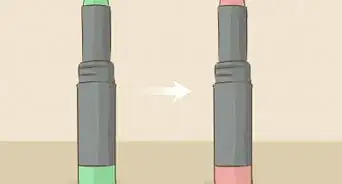

 14 Ways to Treat Bruised or Cracked Ribs
14 Ways to Treat Bruised or Cracked Ribs
 Best Excuses to Use to Explain Away a Hickey
Best Excuses to Use to Explain Away a Hickey
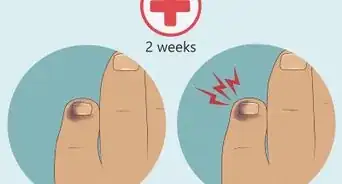
 Ways to Heal Bruises Quickly: Home Remedies, First Aid, & Medication
Ways to Heal Bruises Quickly: Home Remedies, First Aid, & Medication



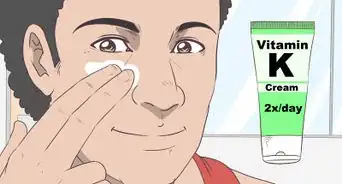
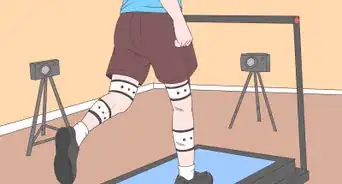
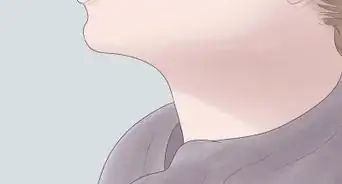

References
- ↑ http://www.nlm.nih.gov/medlineplus/ency/article/007213.htm
- ↑ http://www.nlm.nih.gov/medlineplus/ency/article/007213.htm
- ↑ https://medlineplus.gov/ency/article/007213.htm
- ↑ https://hhma.org/healthadvisor/aha-aceband-sma/
- ↑ https://my.clevelandclinic.org/health/diseases/15235-bruises
- ↑ https://www.ncbi.nlm.nih.gov/pmc/articles/PMC2763764/
- ↑ https://pubmed.ncbi.nlm.nih.gov/12140470/
- ↑ https://onlinelibrary.wiley.com/doi/abs/10.1111/j.1365-2133.2010.09813.x
- ↑ https://www.ncbi.nlm.nih.gov/pmc/articles/PMC3491633/
About This Article
While it takes time for a bruise to heal, you may be able to help speed along the healing process by applying an ice pack to the bruise for no more than 15 minutes every hour. After 24 hours, apply a hot compress for about 20 minutes to help circulate the blood that has gathered under the skin. Applying arnica gel, vinegar, or witch hazel to the bruise may also help it to heal more quickly. Keep reading to learn tips from our medical reviewer on when to seek medical help for a bruise, such as if you feel extreme pressure in the area.
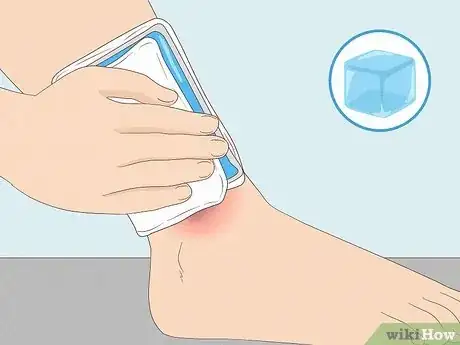
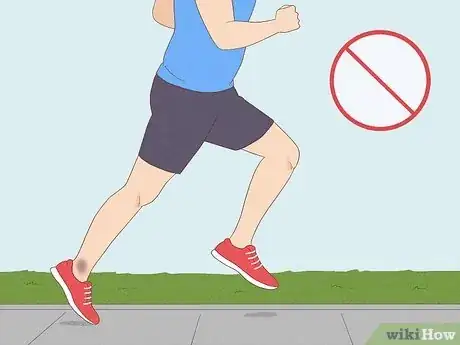

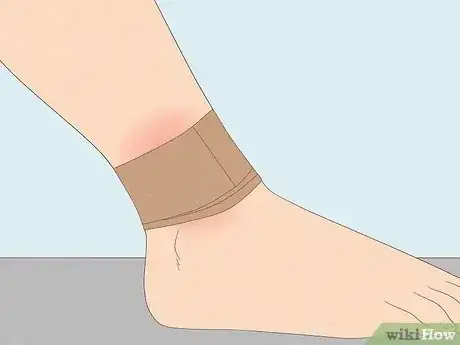
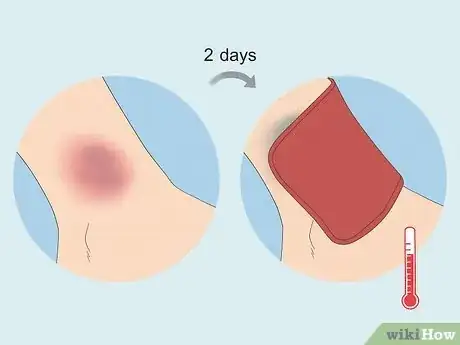
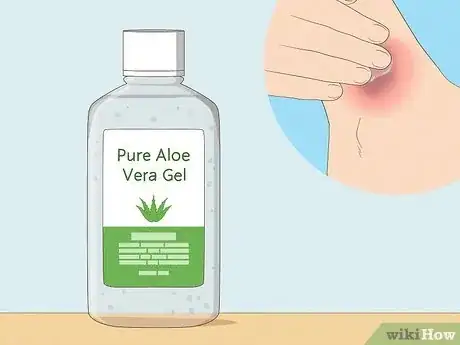
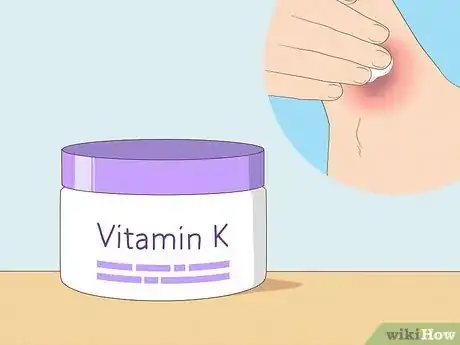
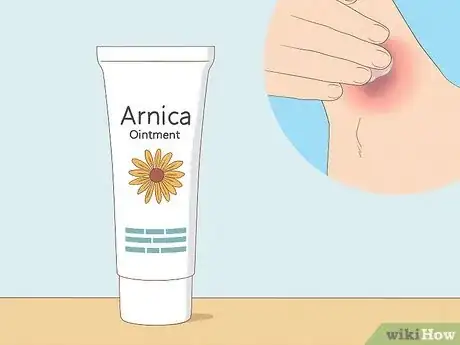
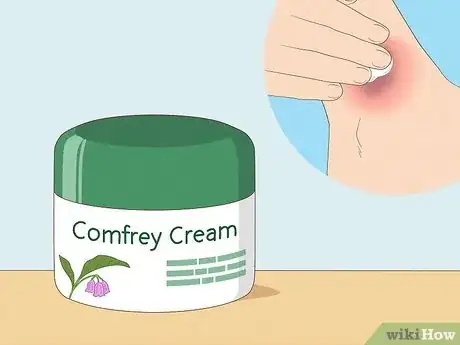
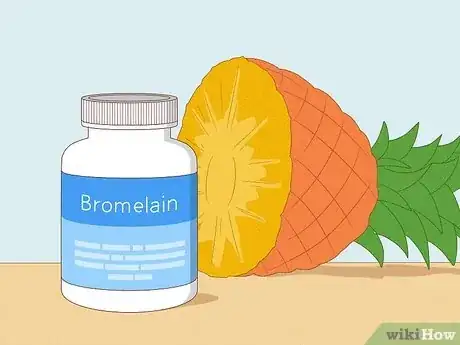

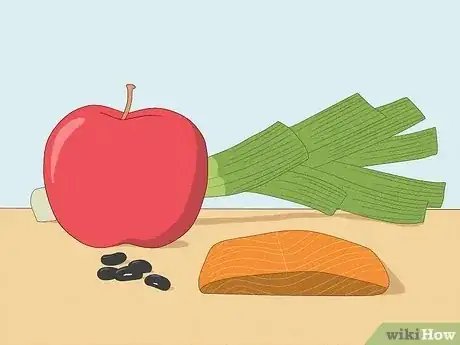
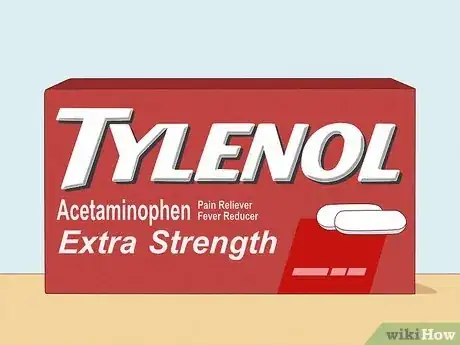
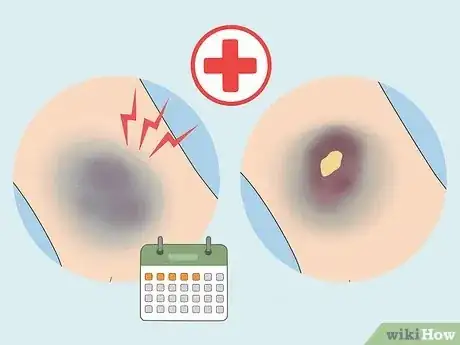

















































Medical Disclaimer
The content of this article is not intended to be a substitute for professional medical advice, examination, diagnosis, or treatment. You should always contact your doctor or other qualified healthcare professional before starting, changing, or stopping any kind of health treatment.
Read More...